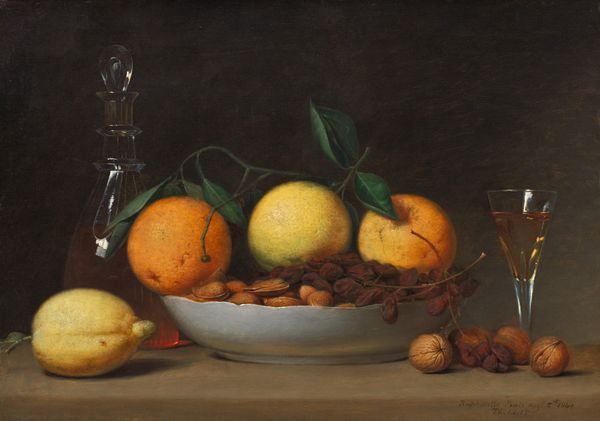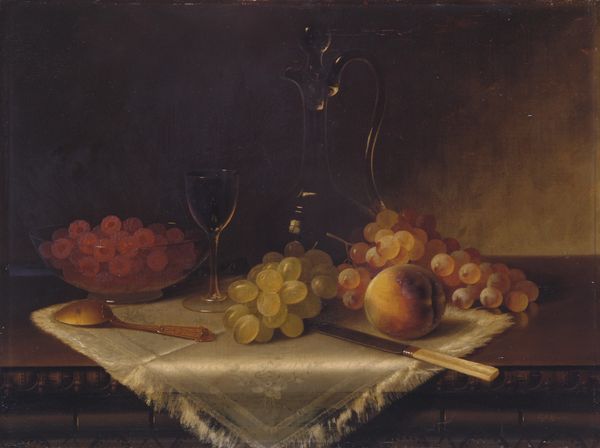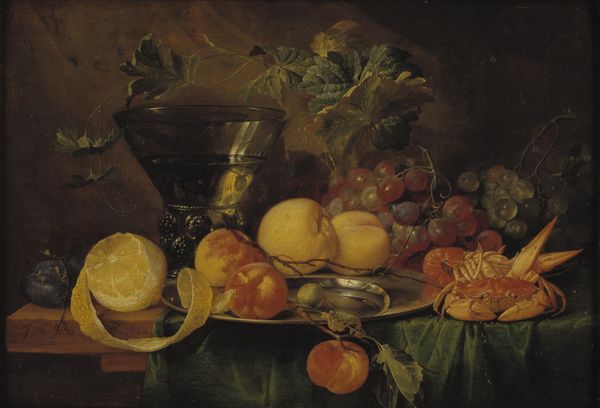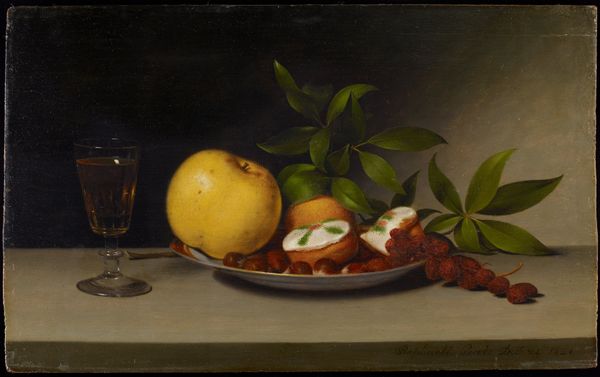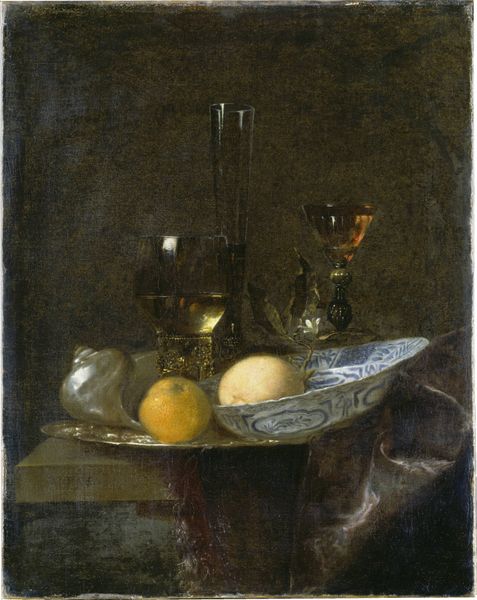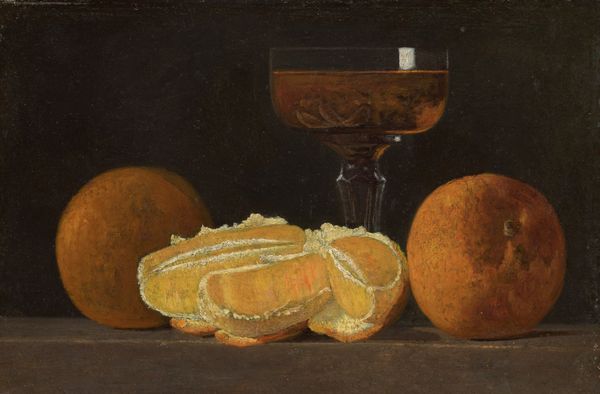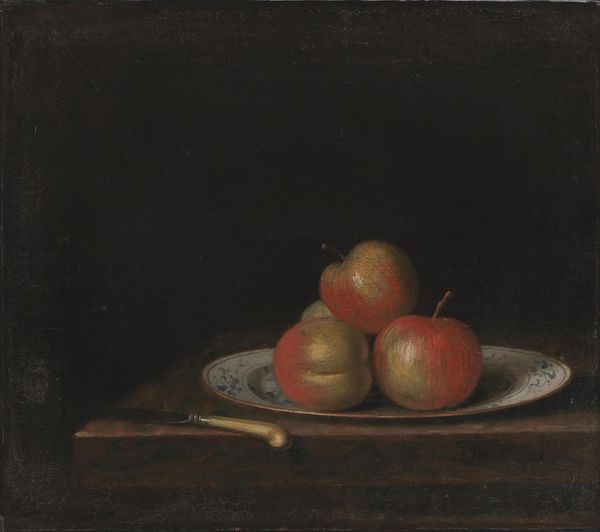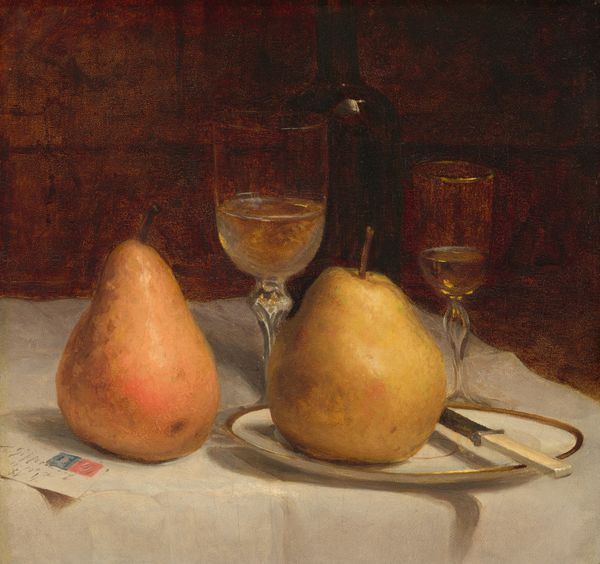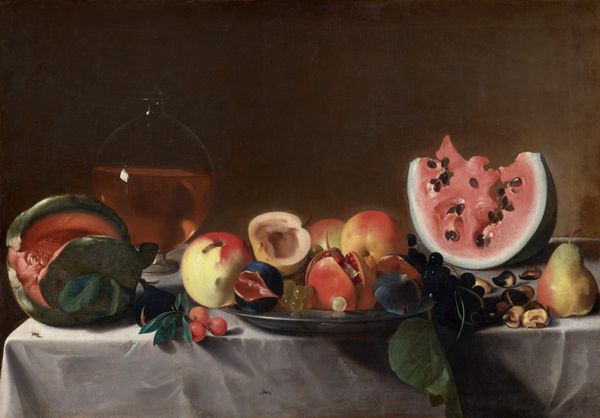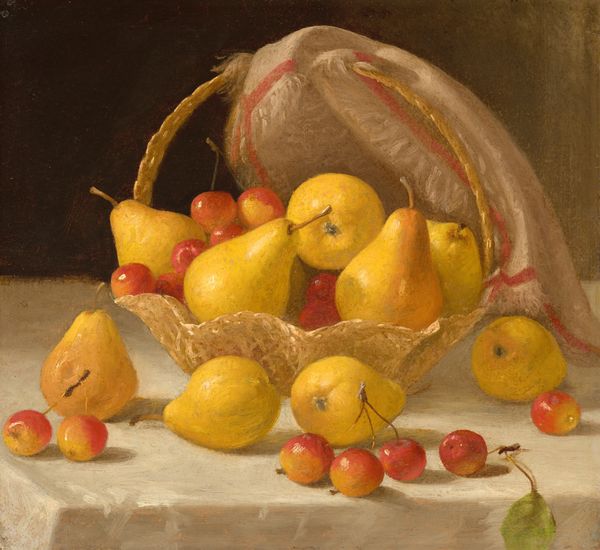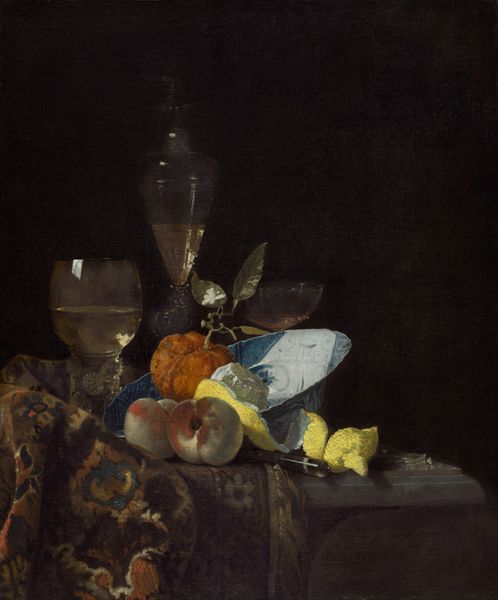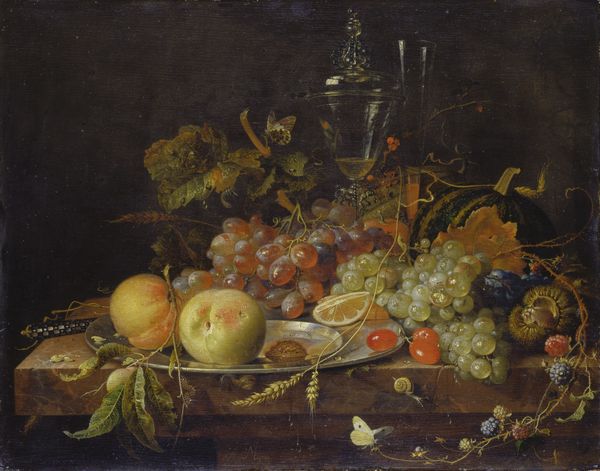
oil-paint
#
gouache
#
oil-paint
#
oil painting
#
romanticism
#
realism
Dimensions: overall: 26.67 × 41.59 cm (10 1/2 × 16 3/8 in.) framed: 36.04 × 51.22 × 4.6 cm (14 3/16 × 20 3/16 × 1 13/16 in.)
Copyright: National Gallery of Art: CC0 1.0
Editor: Raphaelle Peale’s "Still Life with Apples, Sherry, and Tea Cake," from 1822, painted with oil paint… it has a certain subdued elegance, wouldn't you say? The light feels very intentional, almost highlighting the… well, the ordinary. What strikes you about this work? Curator: Well, consider the materiality of this "ordinary" scene. Oil paint itself, ground pigment suspended in linseed oil, painstakingly applied. Look at the sherry glass – where was it made? Who profited from its production and sale? These are not merely objects; they represent a whole chain of labor and consumption. Editor: So, you’re less focused on, say, the artist's intention and more on the things themselves as part of a system? Curator: Precisely. The very act of creating a still life, traditionally seen as a "low" genre, elevates these objects but also obscures the labor that brought them into being. Why choose these particular objects? Who would have been able to afford them, and what does that tell us about early 19th-century American society? The sheen of the apple and the condensation on the glass aren't just aesthetic details; they speak to issues of class and access. Editor: That's a perspective I hadn’t considered. I tend to focus on the visual impact, the arrangement. Curator: But the arrangement itself is deliberate, isn't it? These items are carefully positioned. The "ordinary" is strategically composed to present a very specific, potentially idealized, view of life, masking the material realities that sustain it. Where were these apples grown, and by whom? Editor: I see what you mean. It reframes how I see still lifes. It’s not just about beauty; it’s about the process behind everything represented. Curator: Exactly! Art history is about understanding objects and aesthetics through their material means. That’s when you can unlock a whole new meaning to any artwork.
Comments
No comments
Be the first to comment and join the conversation on the ultimate creative platform.
